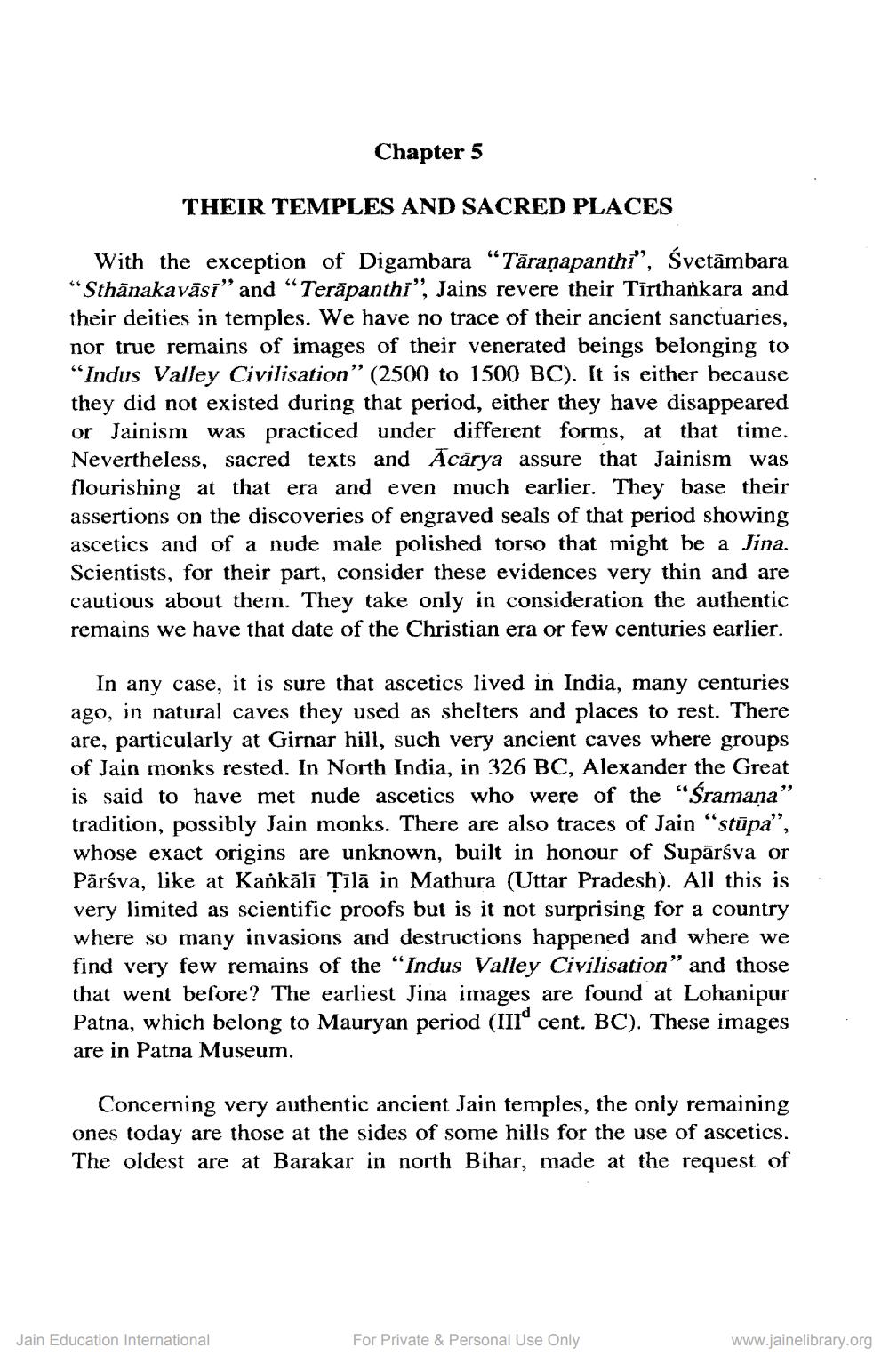________________
Chapter 5
THEIR TEMPLES AND SACRED PLACES
With the exception of Digambara "Tāraṇapanthi", Śvetāmbara *Sthanakavāsi” and “Terāpanthi", Jains revere their Tīrthankara and their deities in temples. We have no trace of their ancient sanctuaries, nor true remains of images of their venerated beings belonging to "Indus Valley Civilisation" (2500 to 1500 BC). It is either because they did not existed during that period, either they have disappeared or Jainism was practiced under different forms, at that time. Nevertheless, sacred texts and Acārya assure that Jainism was flourishing at that era and even much earlier. They base their assertions on the discoveries of engraved seals of that period showing ascetics and of a nude male polished torso that might be a Jina. Scientists, for their part, consider these evidences very thin and are cautious about them. They take only in consideration the authentic remains we have that date of the Christian era or few centuries earlier.
In any case, it is sure that ascetics lived in India, many centuries ago, in natural caves they used as shelters and places to rest. There are, particularly at Girnar hill, such very ancient caves where groups of Jain monks rested. In North India, in 326 BC, Alexander the Great is said to have met nude ascetics who were of the "Sramana" tradition, possibly Jain monks. There are also traces of Jain “stūpa”, whose exact origins are unknown, built in honour of Supārśva or Pārsva, like at Kankālī Tīlā in Mathura (Uttar Pradesh). All this is very limited as scientific proofs but is it not surprising for a country where so many invasions and destructions happened and where we find very few remains of the "Indus Valley Civilisation" and those that went before? The earliest Jina images are found at Lohanipur Patna, which belong to Mauryan period (IIIo cent. BC). These images are in Patna Museum.
Concerning very authentic ancient Jain temples, the only remaining ones today are those at the sides of some hills for the use of ascetics. The oldest are at Barakar in north Bihar, made at the request of
Jain Education International
For Private & Personal Use Only
www.jainelibrary.org




